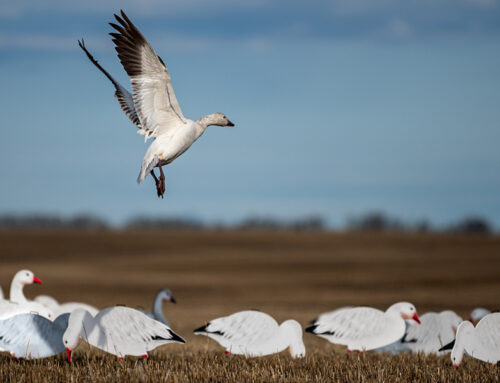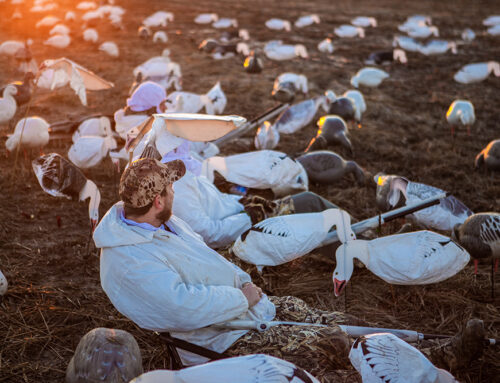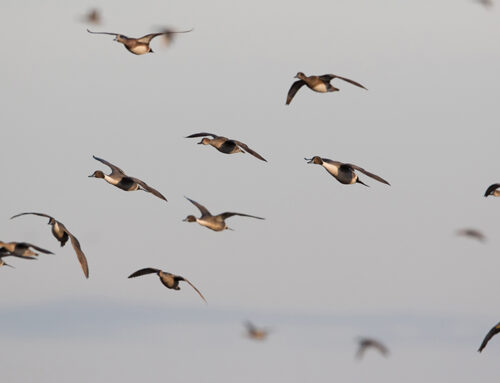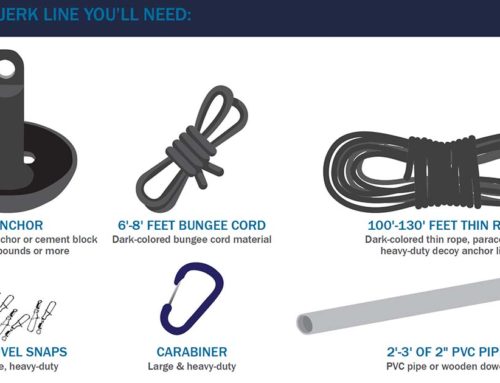Diver Strategies for Decoy-Challenged Hunters

Can’t put out a massive spread? Here’s advice to help you make the most of a smaller setup.
By Brian Lovett
Diving ducks and massive decoy rigs go together like north winds and November sunrises. It only makes sense. Large spreads mimic the huge rafts of divers that congregate on big water throughout the country each fall, and they help attract ducks and guide their approach toward waiting guns.
But hunters can’t always toss out 100-plus blocks. Some situations limit spreads to  a couple of dozen decoys. This goes against conventional diver wisdom and can make hunting tough. However, it doesn’t ensure defeat. In fact, you can actually enjoy great diver hunting in decoy-challenged situations if you set spreads correctly. Here’s how.
a couple of dozen decoys. This goes against conventional diver wisdom and can make hunting tough. However, it doesn’t ensure defeat. In fact, you can actually enjoy great diver hunting in decoy-challenged situations if you set spreads correctly. Here’s how.
Walk-In Slough Hunts
When you can only carry or drag one bag of decoys — think canvasbacks on a North Dakota pothole — try to make every block count.
I use water-keel or suck-duck-type decoys to minimize weight, which allows me to carry up to 28 in an oversized decoy bag without feeling overloaded. The trouble with suck-ducks is they flip upside-down in a stiff wind or wavy conditions. To remedy that, I recently replaced six suck-ducks with standard-keel canvasback decoys. I run the keeled decoys as a tail extending into deeper, rougher water and place the suck-ducks in a large body closer to shore, where they’re less likely to be affected by wind.
My slough rig has more drake decoys than hen blocks. In typical big-water diver scenarios, I like a fairly even drake-to-hen ratio, as I think such spreads look more realistic, and the dark hen blocks provide a nice contrast in long gang-rig lines. But when I’m only running a few blocks, I want as much white as possible — even a 70-to-30 drake-to-hen ratio in some cases. Further, I use quite a few canvasback decoys to maximize the amount of eye-catching white on the water.
Pothole spread configurations don’t have to be elaborate. Remember, diving ducks congregate on small waters for specific reasons, whether it’s food or shelter from the wind. Sometimes, I’ll use a classic J-hook or something similar. Other days, I might set two stools of decoys separated by a 20- to 30-yard landing zone. During windy days at deep sloughs, I’ve even run a large blob of decoys close to shore to imitate divers trying to escape choppy water.
Tackling Big Water
This can be tough duty. Hunting the shoreline of a 10,000-acre lake or flowage begs for a gargantuan spread. But if your boat only holds three-dozen decoys, or you must lug a bag or two across a bog, you’ll have to make a micro spread work.
The key in such situations is to maximize visibility. Stretch your spread by placing decoys much farther apart than you typically would. You can still use a tail with a main body in fishhook-type spreads, but make sure decoys don’t bunch up. You want every block to be visible to approaching birds.
Also, try to stretch several decoys perpendicular to the wind. For example, if you’re hunting in a west wind, set quite a few blocks running north and south of your boat or blind to maximize visibility at a distance downwind. I learned this trick years ago while rowing out to chase a crippled canvasback. After retrieving the bird, I looked back at my spread and saw only a handful of decoys, even though I’d set about 70 in a J-hook-type configuration. Most of my spread ran straight downwind, west to east, so it had little depth at a distance. During subsequent hunts, I used a similar spread but made the main body of decoys in the J much broader north to south, enhancing its visibility to passing flocks.
Here’s another strategy for big-water micro spreads: Avoid traditional configurations, and simply run your decoys in a long, loose blob. This mimics a raft of feeding or resting divers, and it will probably seem more natural and relaxed than traditional spreads.
One more thing: Try to incorporate some type of motion into your spread, whether it’s a jerk-string rig, spinning-wing decoys or aggressive flagging. You’ll usually have to attract the attention of birds at long distances and get them to notice your decoys.
Combination Spreads
In some big-water situations, especially late in the season, you want a spread to attract puddle ducks as well as divers. A Mississippi River hunt for canvasbacks and greenheads might be the perfect example. You probably can’t throw out 100 diver decoys and an equal amount of mallards, so you’ll have to make do with a limited number of black-and-white blocks.
Placement is the critical factor. Most hunters separate divers and puddlers, using a stool of each separated by a landing area, or perhaps a large body of dabblers with a string of divers extending downwind. Some hunters mix puddlers and divers together, as you might see in a feeding situation. Either approach works fine, provided the diver decoys are clearly visible at a distance.
Regardless of my spread configuration, I’ll almost always put the diver decoys on the downwind edge of the spread or stretch a line or stool of divers downwind. That way, diving ducks clearly see the diver decoys and can fly over them on approach. Don’t worry about having too many diver blocks in the main body, as canvasbacks, bluebills, ring-necked ducks, redheads and other divers have no hesitation about mixing with puddlers.
During the late season, when goldeneyes dominate the diver scene, I use separate blobs of mallards and whistlers separated by a large area of open water. I want the goldeneyes to focus on their own kind as they approach.
Put Out What You Have
Hunt with as many diver decoys as you can haul or carry safely in your boat. But don’t be discouraged if your spread has 30 blocks instead of 200. Placed correctly in good areas, small diver spreads can yield surprisingly large results.
Brian Lovett is an avid diving duck hunter from Oshkosh, Wisconsin.






Leave A Comment